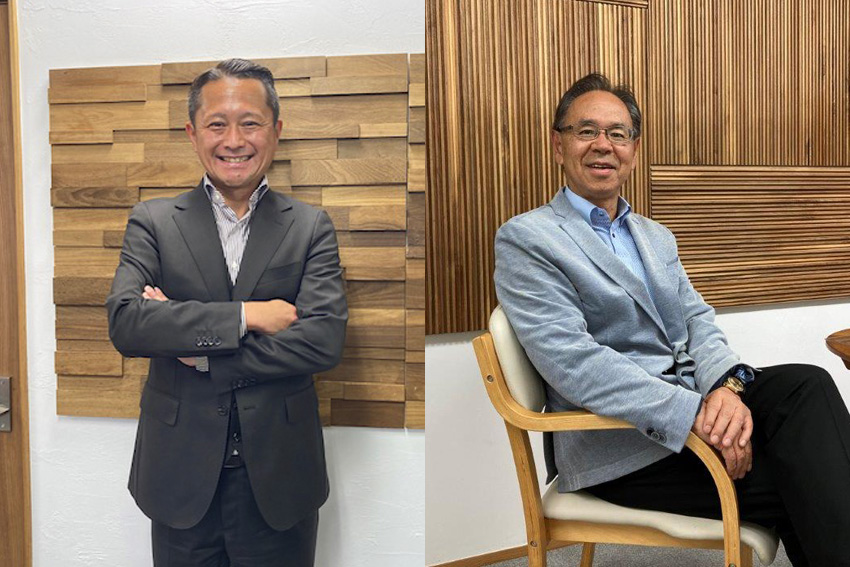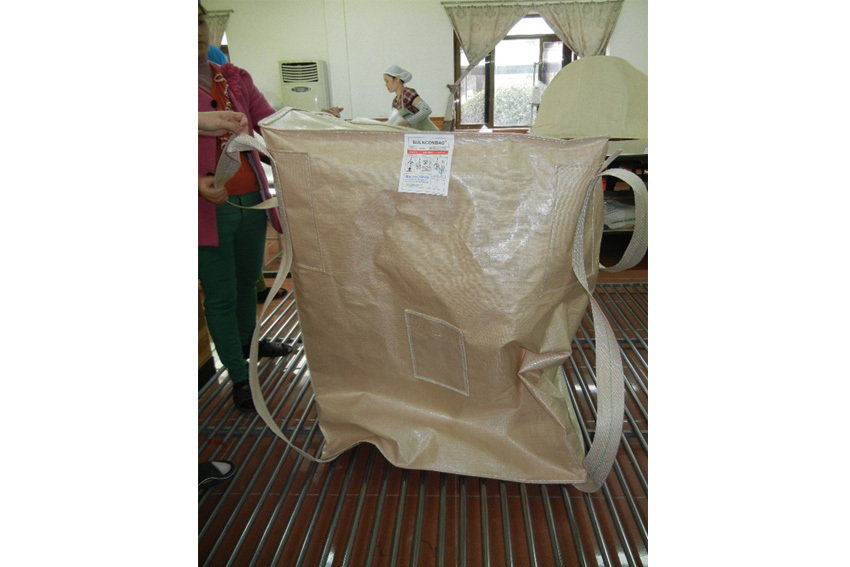"One Will," is focused on environmentally conscious, cross-border business operations and seizing current global opportunities for expansion amid shifting trade policies and supply chain diversification. Known for its flexible intermediate bulk containers (FIBC) and eco-health building materials, the company leverages Japan's reputation for quality and reliability. With a mission centered on sustainability, "One Will" is innovating in eco-friendly products like "Keisou-Kun" diatomaceous earth wall materials and exploring partnerships to expand its recycling and eco-product reach in international markets.

Right now is a pivotal time for Japanese makers. Policies like the US Inflation Reduction Act are forcing corporations to diversify their supply chains for reliability and to reduce country risks, with nations such as China. Japan is known for its reliability, advanced technology, and a weak JPY, so for the time being Japan has never been a more cost-effective option. This means that Japanese firms have an opportunity to expand their existing global market shares. Do you agree with this sentiment, and in your opinion, what do you believe to be the advantages of Japanese companies in this current macroeconomic environment?
Our company was established on July 4th, 1983 which also happens to be American Independence Day. We have named our business "One Will" with the determination to expand our operations across borders and engage in business that contribute to health and the environment. Based on these aspirations, we have chosen the name "One Will". We wanted to conduct import and export in Yokohama which is the first port in Japan to open to the outside world. With a cross-oceanic business, we wanted to focus on environmental friendliness.
From my experience conducting business for some time, I recall that it was in 1990 that the JPY depreciated from JPY 152 to USD 1. It received over time, but now with our post-COVID world that number has gone well beyond JPY 150 once again. The depreciation has indeed had a huge impact on Japanese companies and I am witnessing the country risks associated with China come more into the light.
Japan is known worldwide for its aging population, and experts are now predicting that by 2050 the population of Japan will dip below 100 million due to low birth rates. This has created a labor crisis as well as a shrinking domestic market. From your perspective, what have been some of the challenges and opportunities you’ve seen as a result of this demographic shift, and how are you reacting to these changes? To what extent do you believe you need to look overseas in order to secure long-term business success?
We are experiencing an impact from the demographic changes that are occurring. In fact, in terms of employment, we are struggling to hire people, therefore, we are now opening up employment to foreigners as well. The issue with hiring foreigners however is that the Japanese government hasn’t made it more accessible for foreign workers to enter Japan. We have strongly wished for an environment that would have fewer hurdles for skilled foreign workers to come to Japan.
As for mitigating the shrinking domestic market, since our environmental materials department that centers around flexible container bags is an importing business there is not much we can do. We do have an eco-health division where we have functional wall materials like plaster and diatom earth which we would like to actively explore the possibilities for overseas.
The flexible intermediate bulk container (FIBC) market was valued at USD 7.5 billion in 2023 and is expected to grow at almost 11% annually until 2030. This product offers a cost-effective and versatile solution for shipping various products with its super lightweight design and adaptability. How are you foreseeing the next 12 months of the FIBC in terms of your business and what do you believe will be the main growth drivers going forward?
Our biggest selling product in terms of quantity is our garbage bags. To industrial waste dealers, the price per unit is low. Of course, staying within only a cheap range is not good for the company so we also provide more high-quality and higher priced products.
Since your foundation in 1983, you’ve grown from providing construction sheets and importing special moisture-proof film to where you are today, in which you provide an exhaustive choice of materials and stocking solutions for a whole host of different industries. You have divided your business into three divisions, which are environmental materials, recycling, and your eco-healthy building materials division. Among the many industries you cater to, which do you believe has the most growth potential?
Our main source of revenue is the sale of new flexible container bags and together with those we do provide recycling services. This creates a synergistic effect. These flexible bags are used in many different industries, but as of today, the industrial waste sector uses the most amount of flexible bags.
Are there any new types of products or divisions you would like to create in the near future?
We are only looking to brush up on what we have currently. We started our recycling business in 2003 but after only two years we gave up. It was because the logistics costs were so high that it became not economically viable. The reason why we have the recycling project we have now is because if you use our bags once the weight is about 2-3 kilograms. When you burn the bag three times more than the weight is emitted as CO2, so by reusing the bag you can reduce the amount of CO2 emissions per usage. It was seven years ago that we realized the importance of recycling and restarted the project by lowering logistics costs.
Your company faces challenges in ensuring a stable and cost-effective supply of flexible container bags to meet the diverse needs of various industries. This entails managing the import, distribution, and logistics efficiently across multiple factories in other countries to maintain competitive pricing and quick delivery times. Additionally, the company must also continue to continually adapt to market demands. Can you elaborate on the quality control measures that are conducted when you receive flexible container bags from suppliers that allow you to ensure durability, strength, and resistance to environmental factors?
In Japan, there are regulations on the standards of FIBC bags and these standards call for specific strength as well as UV light resistance. We send in our orders and instruct the factories that are producing the bags to comply with the standards. We aren’t able to see the production processes but we do ask the factories to conduct proper and thorough testing. The testing data is then submitted to quality assurance.
The material for the FIBC bags is polypropylene (PPP) but there is also an opening structure that is made from PVC. Some customers prefer to not use PVC out of environmental concerns. PVC in some cases can be converted to polyethylene (PE) which does not emit dioxin when it is incinerated.

Flexible intermediate bulk container
Can you provide some insights into the manufacturing process for your Keisou-Kun Series of diatomaceous earth wall material, particularly the selection process for diatomaceous earth?
Since way back in 1990 there have been cases in Japan known as the "sick building syndrome," (SBS) where building occupants experience acute health and comfort effects that appear to be linked to time spent in a building. Also, in Japan, more than 90% of wallpaper is made from PVC material which emits harmful gasses when it catches fire. Before being burned, the harmful gasses will kill you. Our mission is to convert wallpaper and interior materials to be more eco-friendly using functional diatomaceous earth.
Diatomaceous earth is a natural material most used by Budweiser, the beer manufacturer. The uniqueness of the material is that it has a lot of pores so it can breathe and absorb. Unfortunately, this material is not sticky, therefore it needs to be combined with other non-organic materials to convert it into something that can be used on walls.
How is your company able to stay on top of technological advancements and market trends in the sector?
There is a new standard for air quality known as IAQ, and the World Health Organization (WHO) has shown data demonstrating that bad indoor air quality has led to many cases of sickness, so in that regard I believe that Keisou-Kun is a unique product that can offer many advantages. Keisou-Kun has air cleaning qualities as well as the fact that it is non-flammable. Additionally, Keisou-Kun can catch other harmful gasses floating in the air along with some viruses such as COVID.
We are unfortunately struggling to sell Keisou-Kun because it is a product developed in Japan. Outside of Japan, nobody knows about the advantages of the product. Additionally, the price is seen as quite high.

Keisou-kun construction example
Are there any strategies or plans in place to further expand your scope of recycling services?
Our current focus is to expand the current business that we have and use the synergistic effects that we can create through the sales of new flexible container bags in hand with the recycling services. In terms of recycling pallets, logistics is always an issue. Japan is now facing serious logistics issues, so overcoming those issues is a challenge.
Throughout many of our interviews, we have heard about the importance of collaboration or co-creation as a means to co-develop new products and penetrate new markets. What role do partnerships play in your business model and are you currently looking for any partnership opportunities either domestically or overseas?
There are two types of partnerships that we are currently engaged in. First is in the importing sector, we have partnerships with our suppliers, and while we started importing from Korea, due to costs we have now shifted to China. While we do still have business with China, the cost of labor is on the rise so we have now made moves towards Thailand, Vietnam, and Bangladesh.
As for export business partners, we are selling Keisou-Kun through partners in Korea and Taiwan, however, in the US and China our products aren't doing very well. I believe that the partners in the US and China do not have huge sales capabilities, therefore there is a limit to the sales we can do. We are looking to expand our partnerships in the US and China to achieve more desirable sales.
Imagine that we come back in 2033 and have this interview with you all over again. What goals or dreams do you hope to achieve by the time we come back for that new interview?
One product we are experimenting with is Japanese washi paper. One other thing I would like to bring up is far infrared rays. Humans emit far infrared rays and as NASA has stated, humans have an affinity to it along with the sun. We have developed a material that emits far infrared rays and by placing it on only one-third of a ceiling, you would no longer require a heater because it emits far infrared rays at the same frequency as humans. This would create a synergistic effect, thus making humans feel warm. We have been testing since November 2023 and so far the results are very positive.
When I established the company my mission was to provide healthy lifestyles to people and the environment. Recycling and our FIBC bags were all developed with this company's mission in mind. Current and future products all keep an environmentally friendly approach in mind since being eco-friendly is the core pillar of our company.
For more details, explore their website at https://www.onewill.co.jp/
0 COMMENTS